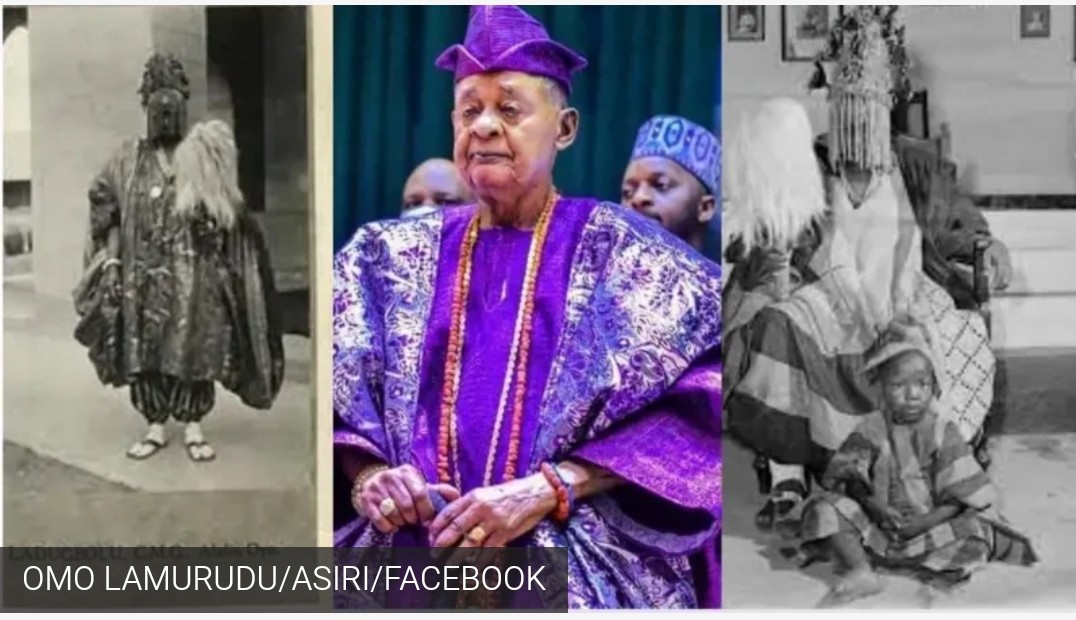The Alaafin of Oyo holds a pivotal role in Yoruba history, serving as the supreme ruler of the Oyo Empire, a dominant force in West Africa from the 14th to the 19th century. The lineage of Alaafins reflects the empire’s evolution, challenges, and resilience. Before the recent appointment of Prince Abimbola Akeem Owoade as the 45th Alaafin in January 2025, the throne was occupied by notable figures whose reigns significantly influenced the trajectory of the Oyo Empire.
Founding and Early Monarchs
The inception of the Oyo dynasty is attributed to Oranyan (c. 1000–1050), a descendant of Oduduwa, who established Oyo-Ile as the empire’s capital. His son, Ajaka, initially ascended the throne but was deposed due to his perceived lack of military prowess. This led to the reign of Sango (c. 1075–1085), renowned for his warrior skills and later deified as the god of thunder and lightning in Yoruba mythology. Ajaka was eventually restored to the throne, marking a period of consolidation for the young empire.
Expansion and Cultural Flourishing
Under Alaafin Kori (c. 1105–1135), Oyo-Ile expanded significantly, laying the groundwork for future prosperity. His successor, Oluaso (c. 1135–1150), was noted for his extensive progeny, reportedly fathering numerous children, which strengthened royal lineage ties across the region.
Challenges and Resilience
The 16th century presented formidable challenges, notably during the reign of Onigbogi (c. 1500), when Nupe forces invaded Oyo, compelling the royal court to relocate. This period of adversity was overcome during the reigns of Eguguojo and his sister, Orompoto (c. 1554–1562), the latter being the first female Alaafin. Orompoto is credited with driving the Nupe from Oyo in 1555 and reestablishing stability.
Military Prowess and Administrative Innovations
Alaafin Ajagbo introduced significant military reforms, including the creation of the title Aare Ona Kakanfo, the empire’s supreme military commander, enhancing Oyo’s military capabilities. Later, during the reign of Abipa (1570–1588), the capital was rebuilt at Oyo-Ile after years in exile, symbolizing the empire’s resilience.
Peak and Subsequent Decline
The empire reached its zenith under Alaafin Ojigi (c. 1724–1735), who successfully conquered the Dahomey Kingdom in 1730, extending Oyo’s influence. However, internal strife and external pressures led to periods of instability. The notorious reign of Bashorun Gaa, a powerful prime minister, saw the manipulation and eventual downfall of several Alaafins, including Labisi, Awonbioju, Agboluaje, and Majeogbe, until Gaa’s overthrow during Abiodun’s reign (1774–1789).
Colonial Encounters and Modern Transition
The late 19th and early 20th centuries marked significant transitions as Oyo navigated colonial influences. Alaafin Adeyemi I (1876–1905) witnessed the imposition of British colonial rule, leading to shifts in the traditional power structures. His successors, including Lawani Agogoja and Siyanbola Oladigbolu I, grappled with maintaining cultural heritage amidst external governance.
Recent History
In the latter half of the 20th century, Alaafin Adeyemi II (1945–1955) and his successor, Alaafin Bello Gbadegesin Oladigbolu II (1956–1960), navigated the complexities of Nigeria’s transition to independence. Their reigns were characterized by efforts to preserve Yoruba traditions while adapting to the rapidly changing political landscape.
Legacy
The lineage of the Alaafins before Abimbola Owoade encapsulates a rich tapestry of leadership marked by military conquests, cultural advancements, and resilience in the face of adversity. Each Alaafin contributed uniquely to the legacy of the Oyo Empire, shaping the historical and cultural identity of the Yoruba people.






